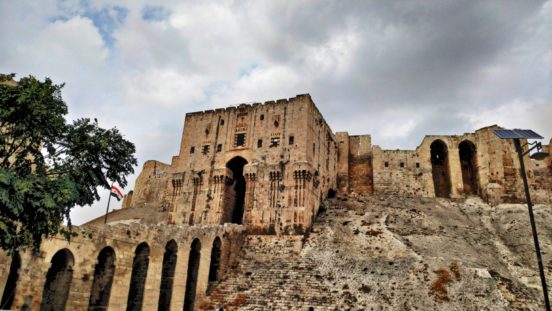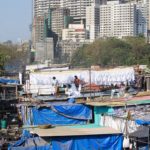As Syrian President Bashar al-Assad is moving towards his goal to recapture ‘every inch’ of the Syrian territory, Idlib governorate in northwestern Syria has been targeted by escalating military offensive from the regime, supported by Russia and Iranian-backed militias. In the last bastion of the rebel forces, an array of opposition factions, including jihadi group Tahrir al-Sham and the Free Syrian Army (FSA) are holding on their positions, backed by Turkish military forces. But the pursuit for full military victory has been (temporarily) halted in March 2020 when Russian President Vladimir Putin and his Turkish counterpart Recep Tayyip Erdogan struck the truce for Idlib province.
Since then, the outbreak of the COVID-19 pandemic coupled with the worsening economic crisis and public pressure have pushed al-Assad to engage in several local agreements with rebel groups in northern Syria. The core of these deals is to provide for the exchange of prisoners and the opening of trade routes between the ‘liberated’ zones and the areas under the control of the Syrian regime. These agreements show how ongoing practice of local conflict management are shaped by power competition at the (inter)national level. In Syria, a wider survey of local agreements reveals that they often work, less as constructive peace initiatives and more as tactical tools to grant at least one of the signing parties a strategic advantage on the battlefield.
Three secret agreements and the release of 18 prisoners
In March and April 2020, the Syrian regime brokered three top-secret agreements with rebel groups to exchange a total of 18 prisoners. The first exchange took place around the city of Darat Azaa, in the western countryside of Aleppo, on 16 May 2020. Tahrir al-Sham – who aims to establish an Islamic Caliphate inside the Syrian borders – released a Colonel and a soldier of the Syrian regime forces in exchange for three fighters.
Two days later, around the town of Tal Hiyah, three soldiers of the Legion of the Levant, a faction of the National Liberation Front, were traded for a fighter and a female intelligence officer of the Syrian regime, in addition to two bodies of Shi’a fighters (including a Lebanese one).
Given the COVID-19 pandemic, the three exchanges were subjected to particular hygiene guarantees
On 22 May, Haradh al-Mu’minin operation room – a jihadi coalition affiliated to al-Qaeda – released three “militia members” against two women and their children. One of the women was the wife of a leader of Tahrir al-Sham and had been captured two years before. She reportedly divorced her husband upon her return and left the jihadi group.
Given the COVID-19 pandemic, the three exchanges were subjected to particular hygiene guarantees. The opposition factions were reportedly anxious about the potential infection of the prisoners released by the Syrian regime. According to private sources, they had stipulated in the negotiations that they would cancel the exchange if any prisoners had been injured or if their health was not carefully checked beforehand.
The Head of the Free Doctor Union in Idlib told the authors that the prisoners released by the Syrian regime – of whom some were kept in Sednaya and Adra prisons in the north of Damascus and other intelligence military branches – were evacuated to an area under the Directorate of Health around Ma’ara to be sterilized and quarantined for two weeks. Once their health condition was checked, they were then allowed to go back to their families.
As it is often the case in Syria, the three exchanges were logistically supported by the Syrian Arab Red Crescent. Several activists interviewed in Idlib governorate pointed to the ambiguous status of this humanitarian organization. The latter is the (only) official government partner through which all UN and international agencies must work in Syria. Formally affiliated with the ICRC, it is perceived to be affiliated with the Syrian regime and under the tight control of the air force intelligence.
Local agreements to ensure key internal and external support
These kinds of local deals are interesting because they serve a number of purposes for the Syrian president. Most importantly, Bashar al-Assad is under pressure from his ally Iran. The latter systematically insists to recover the bodies of soldiers who died on the battleground. Those soldiers belong to Iranian-backed militias and Hezbollah-affiliated groups. They are Iranian, Iraqi or Lebanese and at the centre of a propaganda strategy framed around their martyrdom and the sacrifices of the Shi’a Muslims to free the Syrian land from (Sunni) terrorism.
Prisoner exchanges offer a means for the Syrian President to show his benevolence to the Syrian people
Internal support, however, is also important to al-Assad’s power within Syria, and prisoner exchanges offer a means for the Syrian President to show his benevolence to the Syrian people. While the deals are always top-secret, the Syrian regime depicts the practice as the exchange between heroic ‘Arab sons’ of the Syrian people against valueless “terrorists”. In practice, the exchanges are also opportunities to retrieve precious intelligence about the other side.
Most surprisingly, the Syrian regime has been increasingly involved in local deals with jihadi groups in Idlib governorate. For instance, in February 2020, it agreed on the opening of a crossing for the exchange of goods with Tahrir al-Sham around Saraqib. These kinds of deals are likely to reinforce the role and legitimacy of Tahrir al-Sham inside the rebel-held areas. At the same time, the jihadi group remains one of the strongest opponents to the Syrian regime both ideologically and militarily.
The apparent rapprochement between the Syrian regime and the jihadi insurgents is less surprising when one considers the Syrian president’s strategy to portray the conflict as the struggle of the (legitimate) regime against terrorism. In the end, this binary vision of the conflict makes al-Assad the lesser evil and would grant him the support of the international community to launch a wide-scale offensive in northwestern Syria.
Between 2011 and 2017, several observers detected clear signs of cooperation between al-Assad and jihadi factions
In the early days of the Syrian revolution, al-Assad had already given the order to release hundreds of Islamist militants from Sednaya prison. Between 2011 and 2017, several observers detected clear signs of cooperation between al-Assad and jihadi factions. On the one hand, it was believed that Syrian government forces did not engage in a military confrontation with jihadi groups when they had the opportunity to do so. Instead, regime forces focused their military operations against the moderate elements of the opposition. On the other hand, the Syrian government has been accused of engaging in energy dealswith insurgent groups, purchasing oil and gas from territories controlled by the Islamic State (IS) organisation and Jabhat al-Nusra.
The spreading shadow of external powers
A dozen interviews conducted in Idlib with doctors, civil defence soldiers and human rights activists confirmed the upper hand of Russia and Turkey on the military and political affairs in Syria. Even the most mundane local agreements such as the exchange of a few prisoners are approved, mediated and sometimes supervised by the two powerful players. While external influence poses the question of the agency of the Syrian regime and opposition armed groups, it also jeopardizes the role of the civil society and more broadly representatives of the Syrian population in the management of the conflict.
In the words of a high-ranked officer who took part in several high-level negotiations in Syria, “When a Russian [military man] is in the room, nobody dares to open his mouth. The Russians are in control of everything in the regime-held areas and everyone listens to them”. Besides, it seems that the Russian military was able to gain the relative trust of all warring groups in Syria, including in the camp of the rebels. As the anonymous officer testified: “We know that the words of the Russians are always followed by actions, whether we like it or not”.
As COVID-19 hit Iran and Russia severely, the former is also struggling with international sanctions and a failing economy. As a result, experts expect the Islamic Republic of Iran to have a hard time recovering on the political and economic front, thereby pushing for a retreat from the Syrian battlefield but also the expensive support to several militias across the Middle East.
Assad’s reshuffling “gives Russia the upper hand to the detriment of Iran”
Last year already, accounts of the competition in the highest spheres of the Syrian regime was lending weight to Russian influence. On 8 July 2019, Bashar al-Assad announced numerous changes in the top security personnel – the most important restructuring since the 2012 bombing of the National Security headquarters in Damascus. While Russia attempted to dilute the importance of the Syrian reorganization, it was seen as the main beneficiary of the reform. The decision granted key roles to pro-Russian figures in the Syrian intelligence and security apparatus. It was interpreted as a sign of external growing influence and more precisely as “part of a larger rivalry between Russia and Iranover the control of Syria’s military and security agencies and thus part of the framework of a geopolitical competition”. According to former Lebanese General Elias Hanna, Assad’s reshuffling “gives Russia the upper hand to the detriment of Iran”. A similar analysis was offered by the Saudi Independent Arabia in a paper untitled “Will Russia overthrow Iran’s influence in the Syrian security services”.
In Syria, a negotiated peace is all but impossible. With the support of Russia and Iran, Bashar al-Assad is progressively retaking control of the territory. Yet, the destruction of the trust and social fabric in the country ravaged by almost a decade of atrocious conflict might well be the greatest challenge for whoever wins the final battle, and will require civic engagement.
This is a repost from the Political Settlements Research Programme.
Juline Beaujouan received her Ph.D from Durham University where she was awarded the al-Sabah doctoral fellowship and acted as a member of the AHRC’s Open World Research Initiative (OWRI). She then joined the Political Settlements Research Programme (PSRP), based at the University of Edinburgh, where she researches trust-building between ethnical and religious communities in Iraq and Lebanon. Juline is the co-editor and contributor to the volume Syrian Crisis, Syrian Refugees – Voices from Jordan and Lebanon, and co-author of Islam, IS and the Fragmented State: The Challenges of Political Islam in the MENA Region.
Eyas Ghreiz is a researcher and consultant in areas of human rights and development. Ghreiz is also a Master student in International Development, specialising in conflict, security and development, at the University of Birmingham, UK. Ghreiz has over eight years of experience working with international NGOs, and UN bodies in Jordan, Syria, Turkey and Yemen. He has published several articles in both Arabic and English and contributed to the book Syrian Crisis, Syrian Refugees: Voices from Jordan and Lebanon, published by Palgrave Macmillan in both English and Turkish, and will be published in Arabic soon.










Comments by abhatias